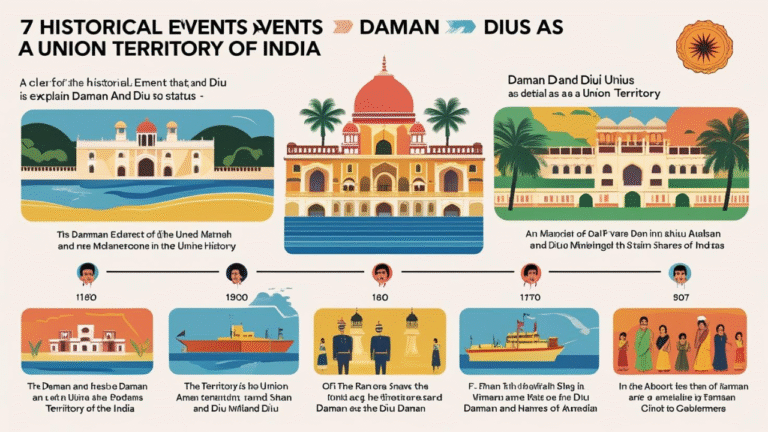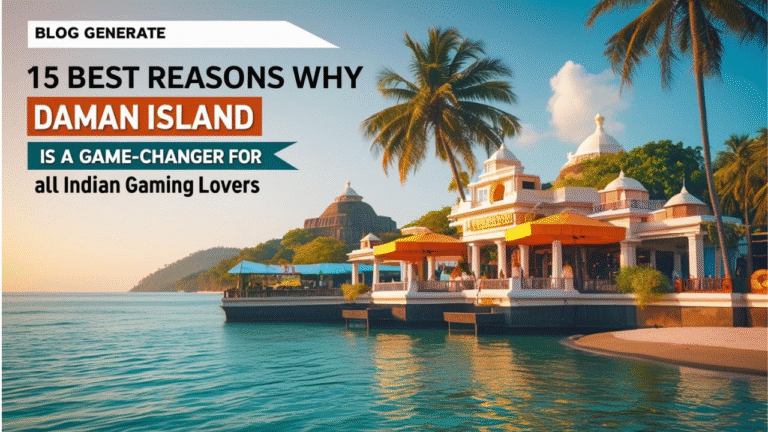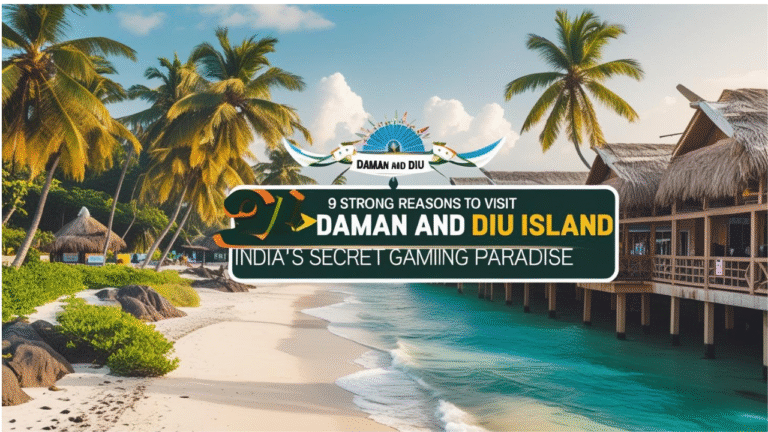What separates Daman and Diu — frequently referred to as one entity — are two separate geographical units that share a joint colonial history but have different identities, cultural profiles, and administrative arrangements. Although both were part of the Portuguese colony until 1961 and even became a Union Territory later, they are divided by almost 650 kilometers of Arabian Sea and have divergent tales of development, tourism, way of life, and administration.
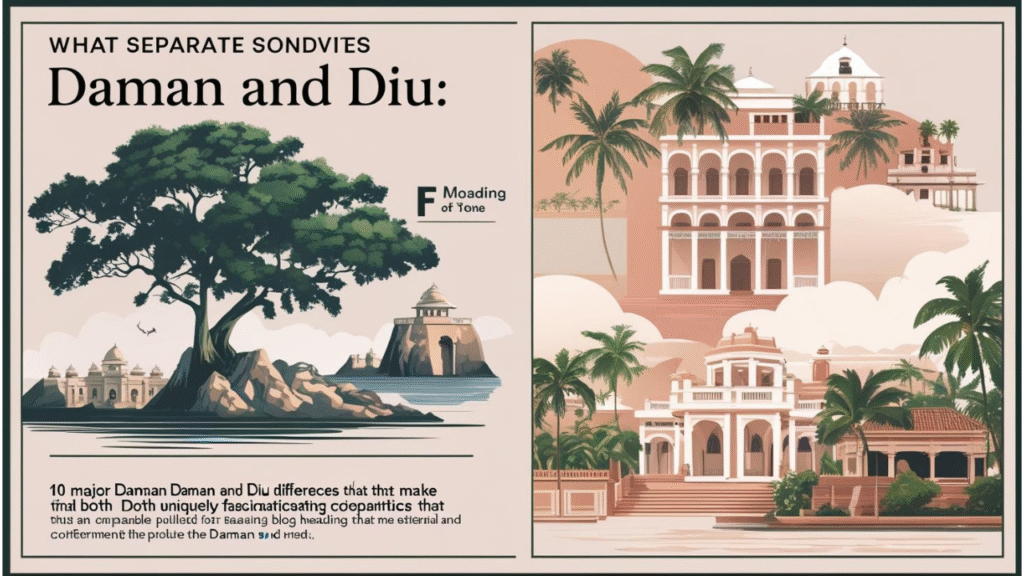
In this comprehensive guide, we’ll explore what truly separates Daman and Diu — from their geography and demographics to their cultural charm and economic offerings — offering clarity for travelers, students, and enthusiasts curious about these beautiful coastal gems of India.
Geographic Location and Distance
One of the simplest but most fundamental distinctions is in their geography. Daman sits on India’s west coast, surrounded by Gujarat to the north, south, and east, and the Arabian Sea to the west. Diu is an island off the southern coast of Gujarat’s Kathiawar Peninsula. The two are roughly 650 kilometers apart — a distance not only of miles, but of identity.
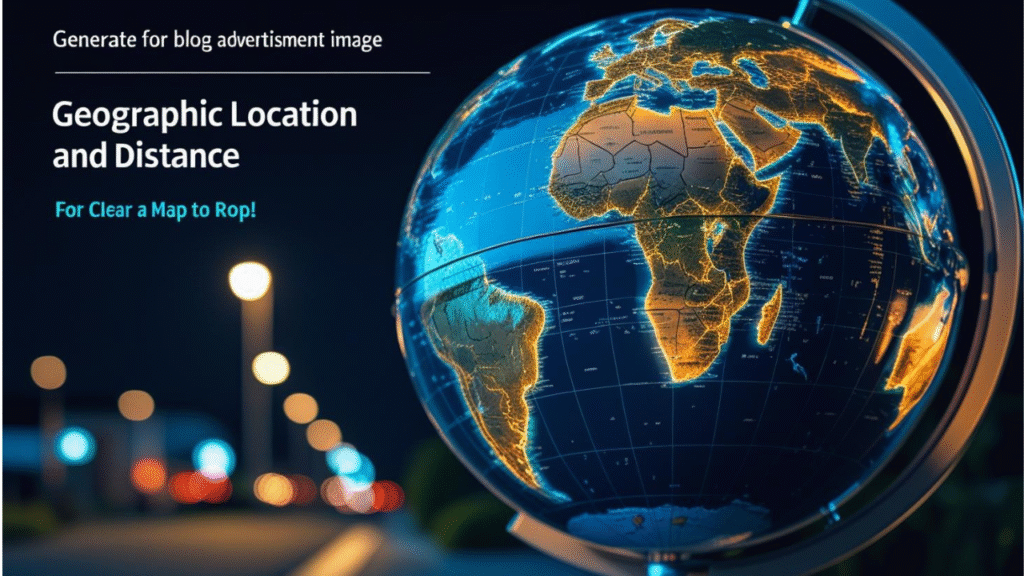
Though Daman is more road-accessible from urban centers such as Vapi and Surat, Diu possesses an airport of its own and provides the more secluded, peaceful island feel.
Administrative Structure
Until January 26, 2020, Daman and Diu were administered together as a Union Territory as part of Dadra and Nagar Haveli. From then onward, they were merged into a combined union territory called “Dadra and Nagar Haveli and Daman and Diu.” Even though the territories were merged, Daman operates as the capital of the new UT, carrying out the principal administrative activities.
This politically centralizes Daman more, while Diu continues to be more tourism-based.
Difference between Daman and Diu Historical and Colonial Heritage
Daman and Diu have a common Portuguese colonial history, having been under Portuguese rule for more than 450 years before being annexed by India in 1961. Although both have a Portuguese colonial heritage, the architectural footprints vary.
Diu’s churches and forts — the Diu Fort and St. Paul’s Church, in specific — reflect opulent Portuguese architecture, a clear confluence of Gothic and Baroque. Daman has, too, reflected Portuguese influence but has relatively modernized faster, balancing urban growth with heritage.
Language and Demographics
Gujarati is the dominant language in both, with Hindi and English following. Daman, however, receives more industrial workers and migrants because of its industrialization, and it has a more diverse population mix.
Diu, conversely, has a lower, more settled population with communities more closely centered around traditional fishing and tourism-linked activities.
Daman vs Diu comparison Economic Focus
Daman has also become an industrial center because of its geographical proximity to Maharashtra and Gujarat. With many manufacturing plants, Daman receives heavy investment and is a key regional contributor to economic output.
Diu, on the other hand, depends largely on tourism and fishing. Due to its beautiful beaches and low population density, it is a desired holiday destination and not a business hub.
Tourism and Attractions
Tourism characterizes Diu — a peaceful island famous for palm-lined beaches such as Nagoa and Ghoghla, its churches well preserved from the colonial days, and the massive Diu Fort. Diu is perfect for the history buff who wants solitude and beach tranquility.
Daman, too, has beaches such as Devka and Jampore but is more urban and congested. Its sites are the Moti Daman Fort and the Bom Jesus Church, but it accommodates a different type of tourist — one who craves short, convenient beach trips with urban amenities.
what separates daman and diu in Lifestyle and Culture
Diu retains a more relaxed pace of life where fishing culture, while Catholicism also continues to hold sway. Local festivals and customs continue to thrive. The pace of culture is unhurried and indicative of its blend of insularity.
Daman, however, is quicker. Daman, set apart with its industrial arrangement, has a vibrant day-to-day life – more akin to that which is seen in western India’s towns.
Transportation and Connectivity
Daman is much better linked by road and rail, courtesy of its vicinity to Vapi Railway Station and the National Highway system. It is a short getaway for people from Mumbai, Surat, and other surrounding cities.
Diu has an airport of its own (Diu Airport), which links with Mumbai and other choice cities. But its road network is less extensive, making it a bit more difficult to reach than Daman.
Climatic Variations
Both locations have tropical coastal climates with Diu, as an island location, having lower temperatures with a more intense sea breeze. Daman, as part of the mainland, has slightly higher humidity and warmer conditions with the summer months being a particular issue.
Trends in Future Development
Daman is undergoing quick urbanization with ongoing infrastructure growth, leading to new business parks and tourist developments. Diu, however, is being conserved more for its natural and cultural equilibrium with little room for mass industrialization.
This deviation in the objectives of development renders them complementary and not competing with each other — Daman the economic and administrative hub, and Diu the cultural and eco-tourism retreat.
How the Differences Affect Visitors and Residents
- For tourists: If you’re in search of a less noisy, scenic, culturally rich holiday experience, Diu is where you must be. If you’re seeking a quick beach holiday with contemporary amenities and nightlife, Daman is a better choice.
- For companies: Daman provides superior infrastructure, connectivity, and industrial opportunities, but Diu offers very restricted but focused opportunities in eco-tourism and heritage management.
- For locals: Daman might provide greater employment opportunities and superior amenities, but Diu offers a superior quality of life in peace, community, and environmental amenities.
what separates daman and diu Actionable Insight for Tourists
- Blend both: Take the twin-destination holiday — arrive in Daman for the city-sea experience, and shuttle to Diu for a couple of lazy days.
- Look up seasonality: Steer clear of monsoon months (June to September) when travel can be interfered with.
- Get a grip on your priorities: For business or administrative transactions, select Daman. For recreation and seclusion, select Diu.

FAQs: what separates daman and diu
Q1. Are Daman and Diu a part of the same territory?
Yes, they are a part of the same Union Territory, now merged with Dadra and Nagar Haveli since 2020. Still, they are geographically different and administratively complementary.
Q2. How distant is Daman from Diu?
Around 650 kilometers by road or air, divided by the Arabian Sea.
Q3. Which one is good for tourism — Daman or Diu?
Diu suits heritage and peaceful beach tourism, whereas Daman has city experiences and convenient accessibility.
Q4. Can I make a trip to both Daman and Diu?
Yes, but planning is necessary because of the distance. There have to be connecting flights or extensive road drives.
Q5. Do both Daman and Diu share the same language?
Yes, Gujarati is common in both places, as well as Hindi and English.
Conclusion
Understanding the what separates daman and diu reveals how two coastal regions with a shared history can evolve in distinct ways. From infrastructure and economy to culture and tourism, these regions offer unique flavors of Indian diversity. Whether you’re a traveler, investor, or student of Indian geography, recognizing what separates Daman and Diu adds depth to your knowledge and enhances your experience.

Both regions — while separate — contribute to the rich mosaic of India’s coastal identity, standing not as rivals, but as unique destinations with individual charm and potential.

